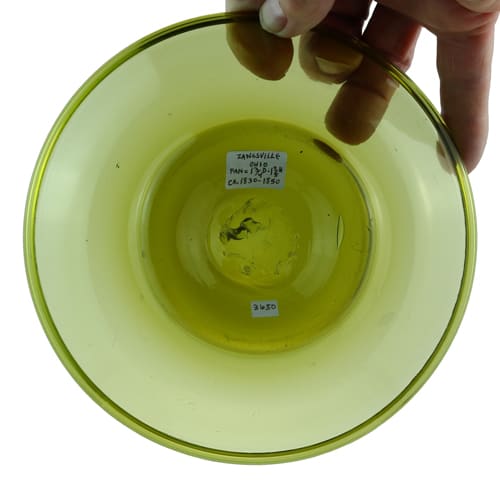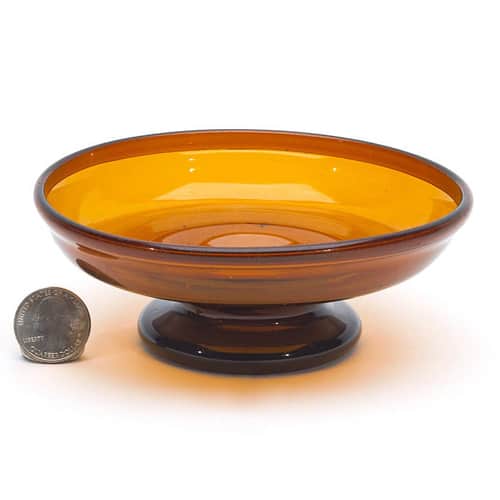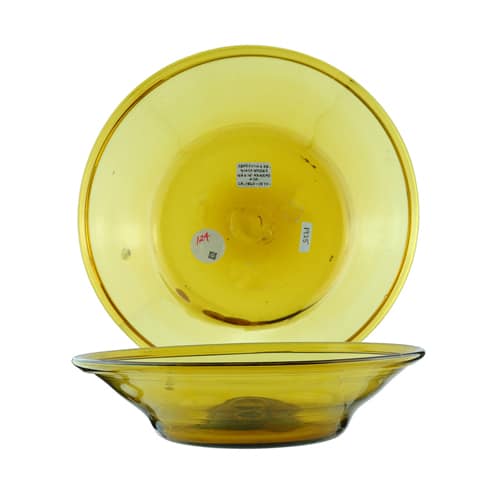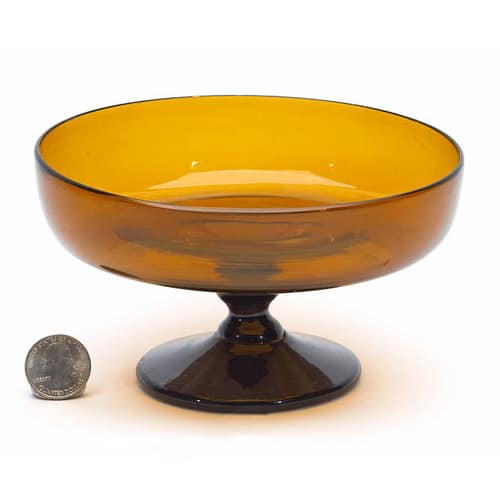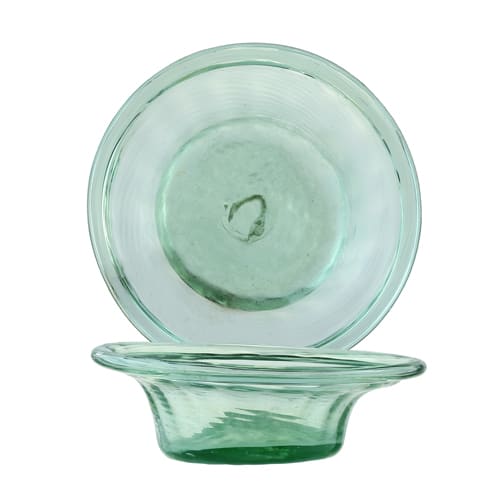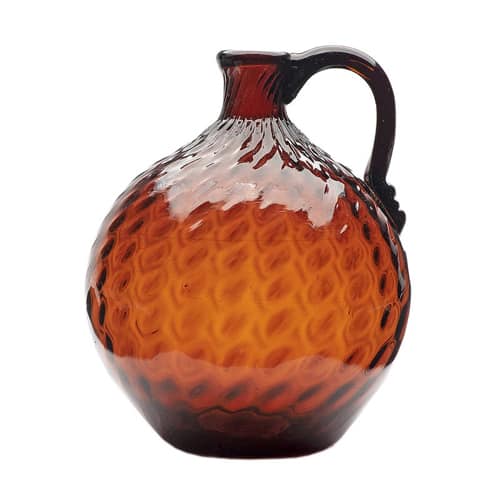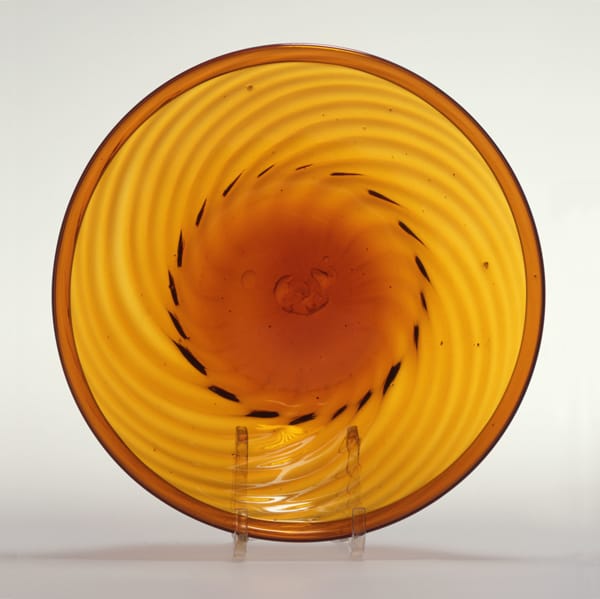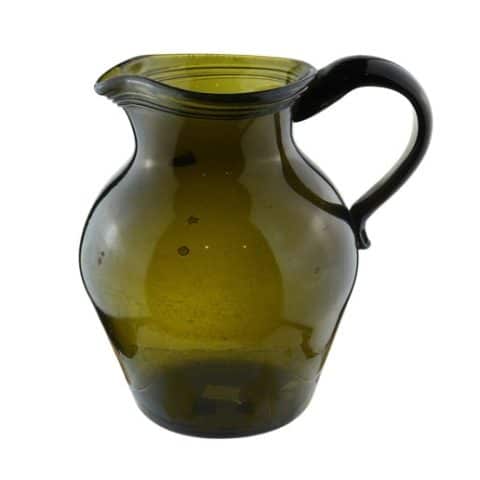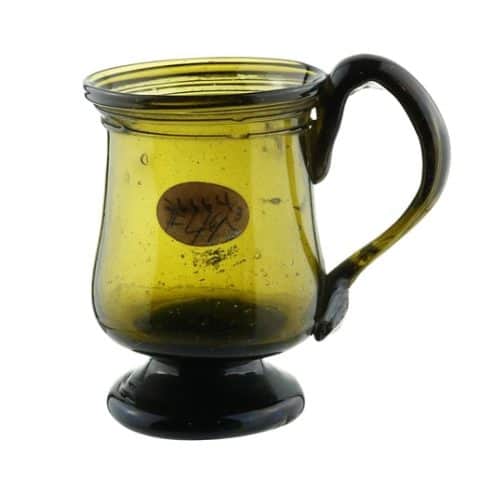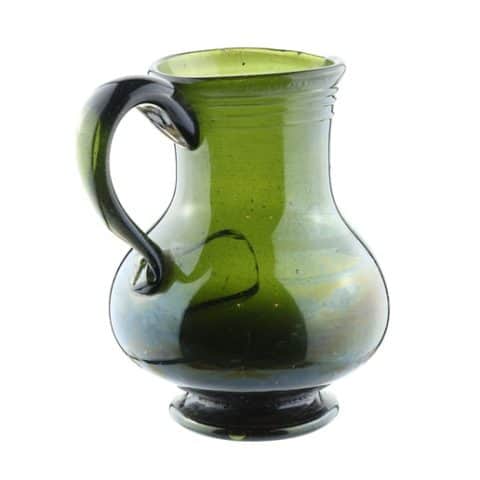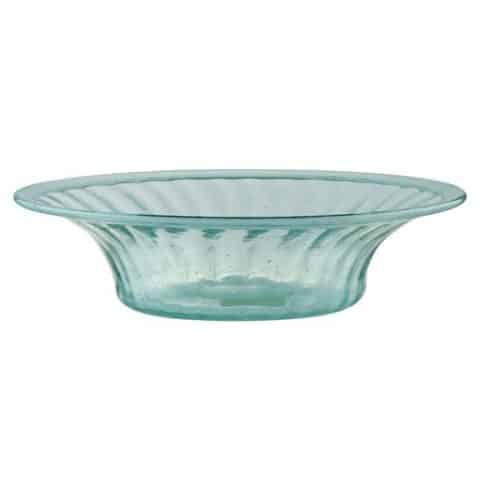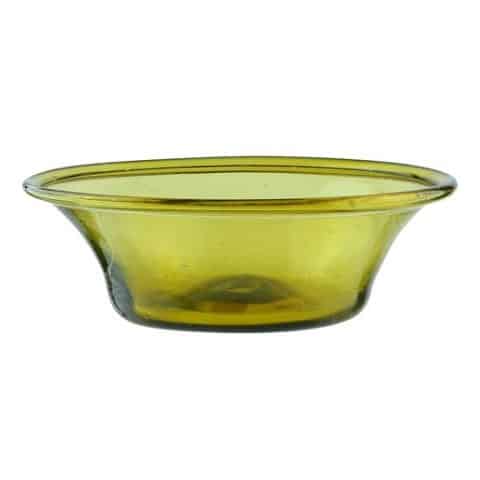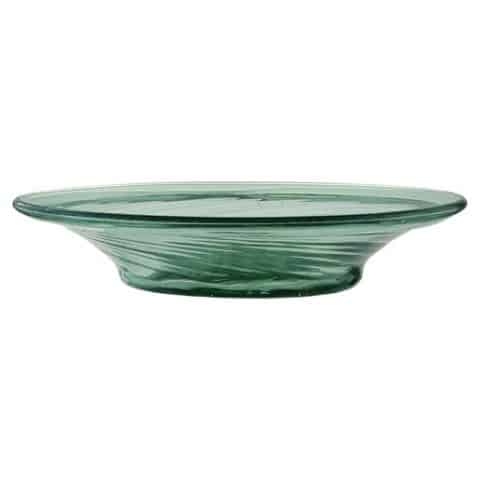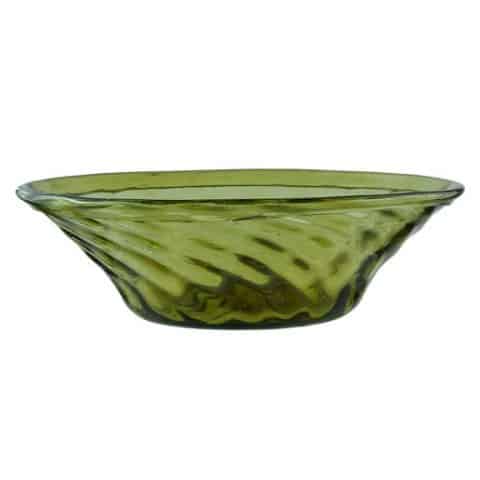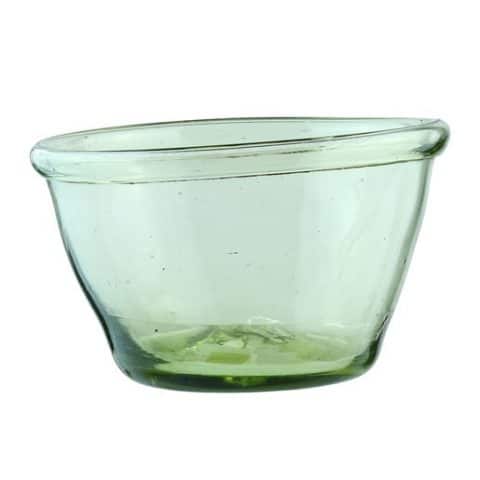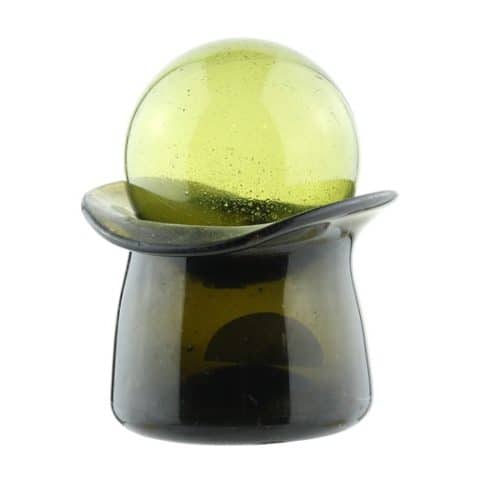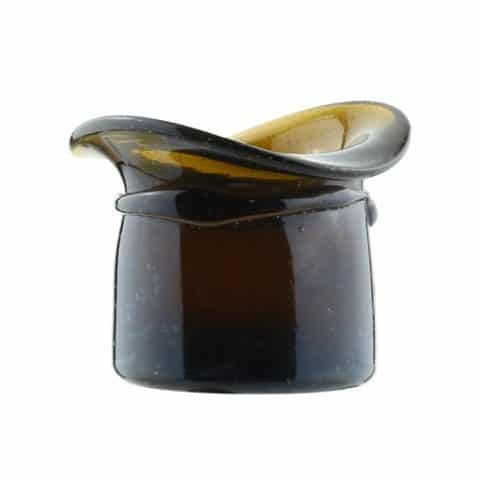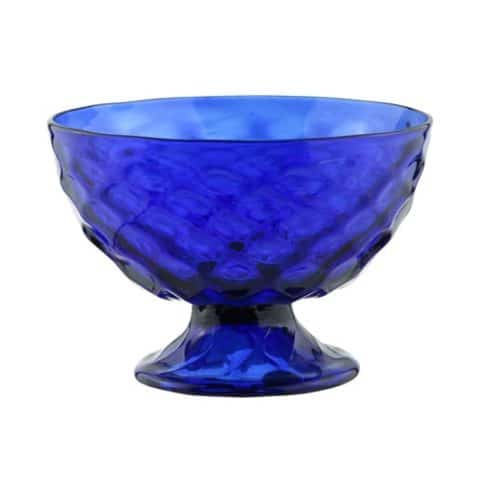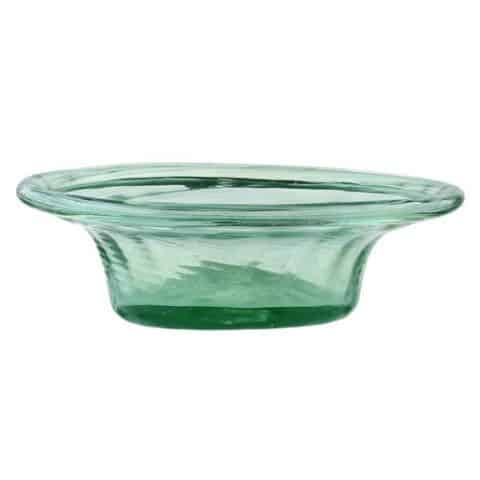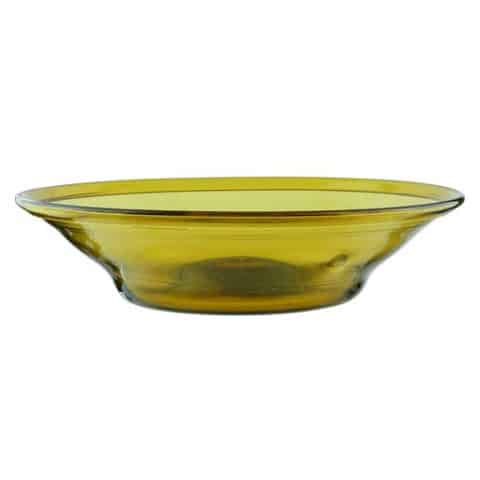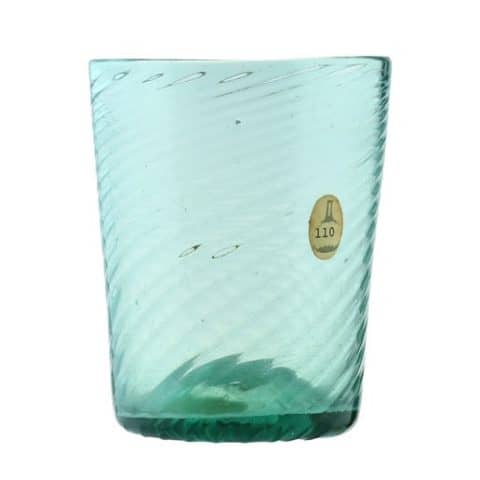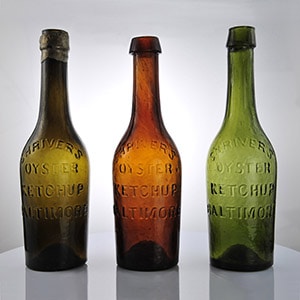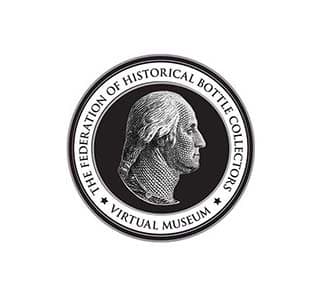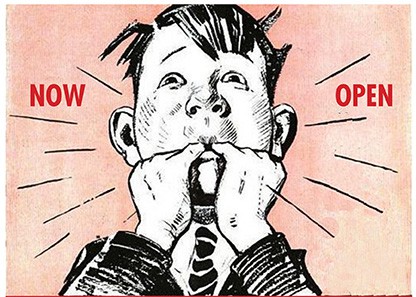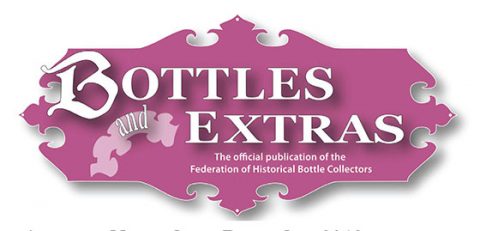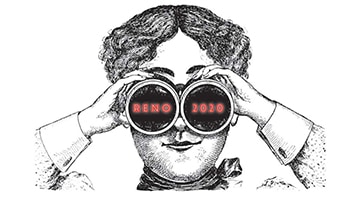Zanesville Free-Blown Pan
Zanesville Free-Blown Pan
Zanesville, Muskingum County, Ohio
Olive-Yellow Pan
Provenance: John Fifer Collection, ex Darl Fifer Collection

Ohio and Midwestern glass fall in a category of its own, distinctly American and expressive of the finest craftsmanship in the development of glassmaking in America, untainted by the later commercial mechanization of the industry. Within our Free-Blown & Pattern-Molded Gallery, we have examples representing the great Ohio glasshouses located in Kent, Mantua, Ravenna, and Zanesville.
This wonderful olive-yellow free-blown pan is attributed to one of the many fine glasshouses in Zanesville, Ohio. The free-blown pan is cylindrical in form with a pontil scar. The diameter is 6-¾”, with the bottom 3-½” in diameter. The pan is 1-3/8” tall and has a tooled outward folded rim.
See the museum example of a Free-Blown Zaneville Bowl attributed to G. W. Kearns & Co.
See the museum example of an aqua 19-rib Zanesville Pattern Molded Bowl attributed to White Glass Works.
See the museum example of a Zanesville Pattern-Molded Tumbler.

In the early nineteenth century, Zanesville was a small town that incorporated in 1814. White Glass Works was the first truly organized glassworks that was established one year later. There were certainly other earlier glassmakers in Ohio, but few if any of these ever reached the incorporation stage. Much of the early glass industry were sole proprietorships, and the nature of the early Ohio Industry was such that almost all of the really early glassmakers left few records.
Zanesville was surrounded by thick forests and had all the necessary ingredients for making glass such as sand, potash, and lime which could be obtained nearby. The glassmakers also had access to coal and wood to fuel the glass furnaces. Making glassware helped ensure meeting the demands of a growing population as well as expanding the economic base.
During these years and up through the 1870s or so, various Zanesville glasshouses and their talented glassmaker’s made window glass, flasks and decanters, sugar bowls and covers; pitchers, large and small; pans and shallow bowls varying in depth and diameter; salts, flips and tumblers, vases and other articles. The glass pieces patterned in these bottle molds are among the finest examples we have in Early American blown glass.
Zanesville colors are fine and varied. The ambers, ranging from a dark brownish tone to golden yellow, are superb; the greens vary from brilliant aquamarine to deep yellowish or olive tone; occasionally a delicate cornflower, blue or deep sapphire, is encountered; and rarely a brilliant, vibrant amethyst. Similar pieces, free-blown and without a pattern, are also encountered in the same range of glowing brilliant colors.
Primary Image: Olive-yellow Zanesville Free-Blown Pan imaged on location by the FOHBC Virtual Museum midwest studio led by Alan DeMaison.
Support Images: Yellow Free-Blown Zanesville Bowl and Aqua 19-rib Zanesville Pattern Molded Bowl – FOHBC Virtual Museum.
Support: Reference to Zanesville Glass: A History of the Companies Which Have Manufactured and the People Who Have Contributed to Its Artistry, Elegance and Endurance for Nearly Two Hundred Years, Paperback, Unabridged, January 1, 2011 by J. William Barrett II
Support: Reference to The Kearns Glass Companies of Zanesville by Bill Lockhart, Pete Schulz, Beau Schriever, Bill Lindsey, and Carol Serr with contributions by Bill Barrett and David Whitten
Support: Reference to The Robinsons of Zanesville 1893-1900 by Marg Iwen, Bottles and Extras, 2004
Support: Reference to Ohio Glass 1815-1953, The Toledo Museum of Art, October 1953
Support: Reference to American Bottles and Flasks and Their Ancestry by Helen McKearin and Kenneth M. Wilson, Crown Publishers Inc., New York, 1978.
Support: Reference to Zanesville, Ohio and the Glass Industry: An Enduring Romance, Privately printed, Zanesville, Ohio., 1997, J. William Barrett II.
Support: Reference to Zanesville, Ohio, and the Evolution of its Glass Industry, Bottles and Extras, July 1998, J. William Barrett II.
Support: Reference to Zanesville Glass: A History of the Companies Which Have Manufactured and the People Who Have Contributed to its Artistry, Elegance and Endurance for Nearly Two Hundred Years, Privately printed, Zanesville, 2011, J. William Barrett II.
Support Image: Auction Lot 23: Freeblown Compote, probably a Zanesville glasshouse, Zanesville, Ohio, 1830-1850. Shallow cylindrical bowl with tooled knopf stem and applied saucer foot, medium yellow amber, tooled rim – pontil scar, ht. 3 5/8 inches, bowl dia. 6 1/8 inches, foot dia. 3 1/4 inches; (approximately half the rim has been finely buffed). Similar in form and construction to McK plate 28, #9 A well-constructed bowl with an appealing and rare form. Generally fine condition. – Norman Heckler, Norman C. Heckler & Company
Support Image: Bowl, United States, probably Ohio, Zanesville, 1820-1840, Furnishings; Serviceware, Pattern-molded blown glass, Height: 2 7/8 in. (7.3 cm); Diameter: 10 1/4 in. (26.04 cm), Decorative Arts Council Curatorial Acquisitions Discretionary Fund (M.84.19.2) – Los Angeles County Museum of Art
Support Image: Auction Lot 1: Pattern Molded Handled Jug, ribbed and swirled to the right, 24 ribs, a Zanesville glasshouse, Zanesville, Ohio, 1820-1840. Globular with applied solid handle, medium orange amber with some reddish tones, inward rolled mouth – pontil scar, ht. 6 1/4 inches, greatest dia. 5 inches; (handle rigaree has been broken away, 1/4 inch star fissure at lower body). Similar in form and construction to MW color plate V, #5 A rare, beautiful form in a larger than usual size. – Norman Heckler, Norman C. Heckler & Company, The Peter Tillou Collection, Auction #190
Support Image: Auction Lot 139: Freeblown Footed Bowl, Midwest America, possibly a Zanesville glasshouse, 1820-1840. Cylindrical bowl flaring to rim with drawn cylindrical foot, medium yellow amber, inward folded rim – pontil scar, ht. 2 1/8 inches, bowl dia. 5 3/8 inches, foot dia. 2 3/4 inches; (just a touch of usage wear on rim). Similar in form and construction to McK plate 68, #15 Appealing smaller size and unusual form. Fine condition. – Norman Heckler, Norman C. Heckler & Company, Auction #146
Join the FOHBC: The Virtual Museum is a project of the Federation of Historical Bottle Collectors (FOHBC). To become a member.

